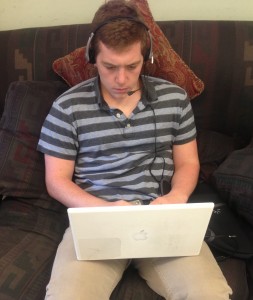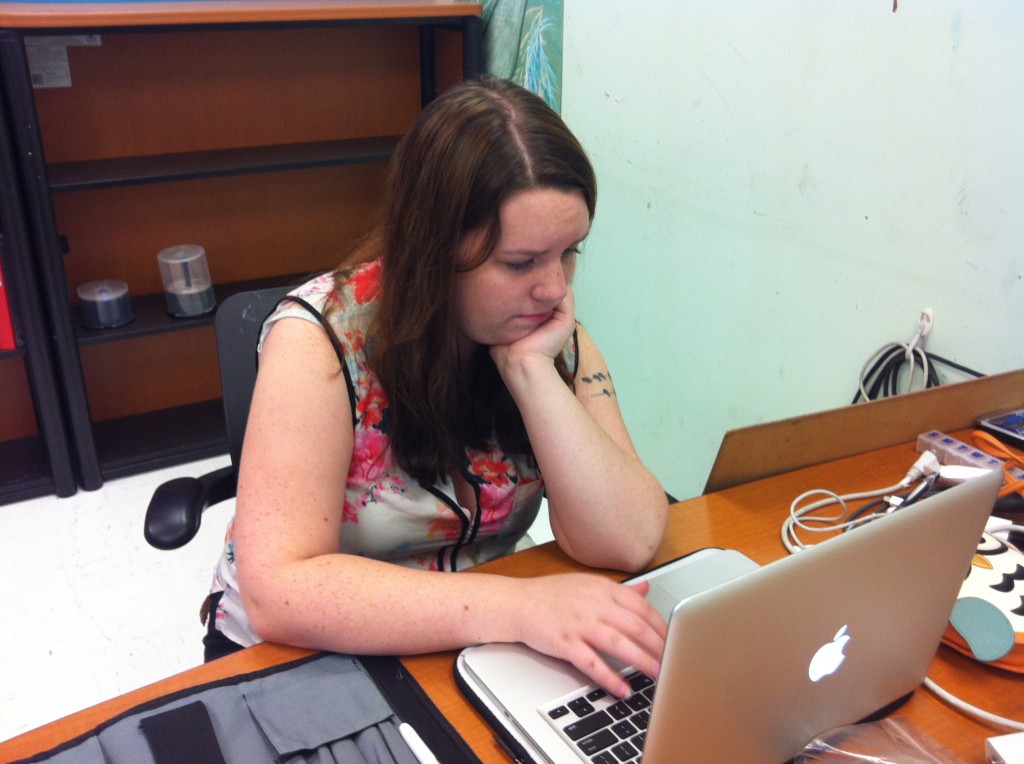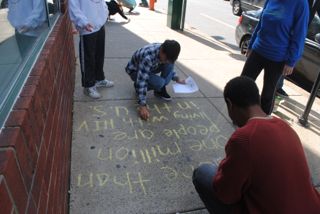
DeShawn McLeod & Melanie Harrington
Staff Writers
Introduced to the new 2012-2013 school year at SLA, Spanish classes 3 and 5 have been given the substitute opportunity to learn another language by using Rosetta Stone.
Spanish teachers Melanie Manuel, Juan Sanchez, Pearl Jonas, and Mark Bey all facilitate these classes and assist students for help.
Due to a budget decision, Spanish teacher Jillian Gierke was laid off from the Spanish department. In her departure, it was decided that language software Rosetta Stone would suffice.
Principal Chris Lehmann believes, “SLA is a unique position, due to the 1 to 1 laptop program and the tech savvyness of SLA students, to leverage Rosetta Stone in ways that are powerful.”
Teachers are hoping the software will be well received. However, students participating in the program and have mixed feelings.
Junior Sara Nesbitt commented, “I don’t like the switch. I’d rather be in a classroom with a teacher teaching.”
Sophomores Micah Getz and Maggie Hohenstein both echoed Nesbitt’s point.
Not all students are negative about the change. Junior Dejah Harley said, “I do like the switch because you can go back and redo it and then by redoing it you can really solidify it in your head.”
Nesbitt agreed that there are advantages to have Rosetta Stone in classroom.
“I don’t have to do any homework because we don’t take the headphones home so there’s plenty of time to do it in class,” Nesbitt commented, “which works out better because I can focus on other classes.”
Along with Nesbitt, Getz agreed, “Yeah, [Rosetta Stone] works pretty well with my schedule. I can do it at home. I can do it at school. And I have a whole entire period to get it done unlike most online courses I’ve done.”
Different types of resources Rosetta Stone has to offer ranges from talking to native speakers to conquering matching games.
The usual process of learning from Rosetta Stone consists of, “Core lessons. And these core lessons are 30+ pages of questions with maybe six or seven questions each page.” Harley stated.
After, “They offer a milestone at the end of each unit to see if you comprehended what you learned,” Junior Byshera Moore-Williams said.
Although students are compliant with the work, that doesn’t mean that Rosetta Stone will stay.
“Is it something that will continue? I don’t think we know yet,” said Principal Lehmann. “I think it depends. I think this is going to be a really interesting year to listen to students, to get a sense from both students and from teachers what they thought were the potential positives of the program, what they thought the drawbacks of the program.”
There is no long-term plan for keeping the program — yet.
“I think come the next budget cycle we’re going to have to really revaluate and get a sense of what worked and what didn’t and whether or not this is something we want to continue,” Lehmann stated.
Mr. Sanchez has a positive attitude with the indefinite implementation of Rosetta Stone.
“One of the things that we stress here at SLA is students become more independent in their learning and self driven and using technology,” he said, “and Rosetta Stone definitely moves in both of those directions.”
Ms. Manuel also believes there are positives to the software.
“It gives them the option to redo all the quizzes and gives them the option to go at their own pace. It gives them the option to choose where they want to start. Because, you could be in Spanish 5, but you might even want to start at the Spanish 2 level,” she said.
Teachers are aware that student have mixed feelings about receiving the software.
“It looks like a lot of them are actually enjoying it. Some of them get frustrated with it because they’re not used to it,” Ms. Manuel said.
Mr. Sanchez acknowledged student frustration:” I think most [students] realized that this was a cost cutting measure and they do want to go back to actually having a teacher.”
But, on the bright side, “They’re doing their work, they’re doing fine,” he said.
Students are starting to figure out strategies for succeeding in the course, like doing verbal assignments at home and teachers regulating the class’ progress so the majority of the class is on the same page.
Overall, “It was the best fix to a really bad situation,” Mr. Lehmann said.


